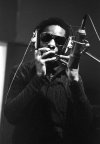50 Years Ago, Stevie Wonder Heard the Future
On the anniversary of the landmark 1972 album “Talking Book,” musicians who made it and artists who cherish it share their stories.By The New York Times Oct. 27. 2022

In 1972 — half a century ago — Stevie Wonder reinvented the sound of pop by embracing all he could accomplish on his own.
He released two albums that year: “Music of My Mind” in March and then, less than eight months later, on Oct. 27, the even more confident and far-reaching “Talking Book.”
“Talking Book” was a breakthrough on multiple fronts. It demonstrated, with the international smash “Superstition,” that Wonder didn’t need Motown’s “hit factory” methods — songwriters and producers providing material that singers would dutifully execute — to have a No. 1 pop blockbuster.
Wonder had given signs on earlier albums, particularly his self-produced “Where I’m Coming From” (1971), that he would not just be writing love songs. “Talking Book” reaffirmed that, and also extended his sonic and technological ambitions, as he used state-of-the-art synthesizers and an arsenal of studio effects to orchestrate his songs with startlingly novel sounds. And its album cover — which showed Wonder wearing African-style robes and braided hair in a quasi-Biblical desert landscape (actually Los Angeles) — made clear that Wonder’s futurism was unmistakably Afrofuturism.

50 Years Ago, Stevie Wonder Heard the Future (Published 2022)
On the anniversary of the landmark 1972 album “Talking Book,” musicians who made it and artists who cherish it share their stories.
